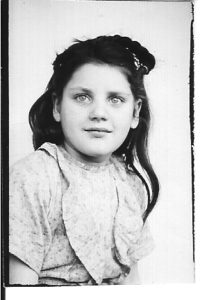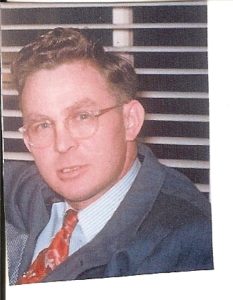
Betty Ann Maule
Betty Mae Maule was one of 60 students who attended the two-classroom Shallmar School in November 1949. When teaching principal J. Paul Andrick asked Betty Mae to write a problem at the board one day, the 10-year-old girl stood up at her desk and promptly fainted.
Betty Mae and her siblings hadn’t eaten anything all day. Their last meal had been the night before when the eight people in the family shared a couple apples.
This is how bad things had gotten in the little coal town on the North Branch Potomac River. What had once been the jewel of Western Maryland coal towns was dying.
Operating only 36 days in 1948, the Wolf Den Coal Corporation, which owned Shallmar, came into 1949 struggling in vain to stay open. The mine shut down in March, having operating only 12 days that year.
Shallmar’s houses had once been considered among the nicest homes for miners in the region. Now they needed a fresh coat of paint and more than a few were boarded up because they were no longer livable or needed.
The Maule family had six children. When Andrick explained to Walter Maule and his wife, Catherine, that he knew their children hadn’t eaten that day, Catherine’s explanation was simple: The mine had closed.
Miners had collected unemployment, but it hadn’t been much because the miners hadn’t worked much in recent years. Even that meager amount had stopped in August.
Albert Males, chairman of the United Mine Workers local relief committee, had then used the union treasury to issue small relief checks of $2 to $7 a week to families. He only had $1,000 to split among four dozen families so it hadn’t lasted long.
The Maules had been eating only apples that the children had found on the ground at a nearby orchard. Those had run out the day before, which is why the family hadn’t eaten that morning. It wasn’t the first time they had gone without breakfast lately either.
“My children have forgotten what milk tastes like,” Catherine later told a reporter for the Cumberland Evening Times. They hadn’t had any meat or milk for four months.
Catherine assured Paul that they had managed to find enough cabbage and potatoes to get them through the next day. She was proud of this because, “We sometimes don’t even have potatoes and cabbage,” she said.
With the mine closed there were no jobs in Shallmar. Only three people in town had cars and families couldn’t afford the move.

J. Paul Andrick
Taking action
That night, Andrick started writing letters to anyone he could think of who might be able to help from the board of education to his U.S. senators. He also wrote to the county newspaper, The Oakland Republican hoping to let people know about Shallmar’s plight.

The men in Shallmar had tried to feed their families. They hunted each day, but came home empty handed. Many deer in Western Maryland were dying from a disease in 1949 reducing their numbers. Shallmar hunters only managed to bag four deer. The meat was appreciated, though.
“I never cared much for venison, but it was the first fresh meat in this house for three months,” one woman told a reporter with the Portland Sunday Telegram and Sunday Press Herald.
John Crouse was one of the lucky hunters who bagged a deer in season, but it wasn’t enough to keep his family of six children fed for too long. The Crouse family ate one meal a day and on many days and that meal was potatoes and baked beans.
For the rest of the story, visit: